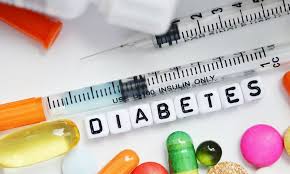Type 1 diabetes

Type 1 diabetes, formerly known as insulin-dependent diabetes, mostly occurs in children and adolescents, and can also occur at various ages. The onset is relatively rapid, the body's insulin is absolutely insufficient, and ketoacidosis is prone to occur. It must be treated with insulin to obtain a satisfactory effect, otherwise it will be life-threatening.
Cause
1. Autoimmune system deficiency
A variety of autoimmune antibodies can be found in the blood of patients with type 1 diabetes, such as glutamate decarboxylase antibody (GAD antibody), islet cell antibody (ICA antibody), etc. These abnormal autoantibodies can damage the insulin-secreting B cells of the human pancreatic islets, making them unable to secrete insulin normally.
2. Genetic factors
Current research suggests that genetic defects are the basis of type 1 diabetes. This genetic defect is manifested in the abnormality of the HLA antigen on the sixth pair of human chromosomes. Research hints: Type 1 diabetes is characterized by familial onset-if your parents have diabetes, you are more likely to develop this disease than people without this family history.
3. Virus infection may be the cause
Many scientists suspect that the virus can also cause type 1 diabetes. This is because patients with type 1 diabetes often have a history of viral infection for a period of time before the onset of disease, and the occurrence of type 1 diabetes often occurs after the epidemic of viral infection. For example, the viruses that cause mumps and rubella, and the Coxsackie virus family that can cause polio, can all play a role in type 1 diabetes.
4. Other factors
Scientists are studying whether these factors can cause diabetes, such as milk, oxygen free radicals, and some rodenticides.
Clinical manifestations
This disease usually occurs in childhood or adolescence, which is the first characteristic. In addition to children, type 1 diabetes can actually occur at all ages throughout your life, especially menopause. The second characteristic of type 1 diabetes is that the onset is generally rapid, with symptoms such as thirst, polydipsia, polyuria, polyphagia, fatigue and weight loss, and rapid weight loss. Some patients have ketoacidosis at first. The third characteristic of type 1 diabetes is that it will eventually be treated with insulin without exception, so type 1 diabetes was originally called insulin-dependent diabetes.
Differential diagnosis
The difference between type 1 diabetes and type 2 diabetes.
The onset of type 1 diabetes is related to HLA antigen, while type 2 diabetes has nothing to do with it; type 1 diabetes can detect GAD and other specific antibodies, and type 2 diabetes has negative antibodies; type 1 diabetes is absolutely insufficient in insulin, so it needs to be used for life In insulin therapy, type 2 diabetes does not require insulin to maintain life; type 1 diabetes tends to have a rapid onset and is prone to ketoacidosis, while type 2 diabetes is not.
treatment
The goal of insulin therapy for type 1 diabetes is to ensure that patients have a good quality of life (that is, to avoid severe hypoglycemia as much as possible) and to control their metabolic level (that is, actively prevent diabetes complications). Older patients can also use metformin and glucosidase inhibitor drugs.
Compared with traditional insulin, insulin analogues have pharmacokinetic advantages. For example, lispro or aspart insulin has ultra-short-acting activity, glargine or detemir insulin can mimic basic insulin properties. Regardless of the insulin treatment plan, patients should first receive special education, and learn to monitor blood glucose regularly by themselves, and adjust the treatment plan in time to promote blood glucose to reach the standard.



